“What’s that noise?” Joel Stanley whispers as the group comes to a halt.
“I think it’s a mouse,” his brother Austin replies. We hear a few faint chirps coming from the ground. Within seconds, Jesse, Austin, Josh, and Joel — four of the seven brothers in the Stanley family — pick up a mischief of baby mice hiding in the grass just inside the boundary of their farm. Each brother picks up one of the tiny creatures, gives it a little “hello,” and sets it off to the side so we don’t step on it on our way through.
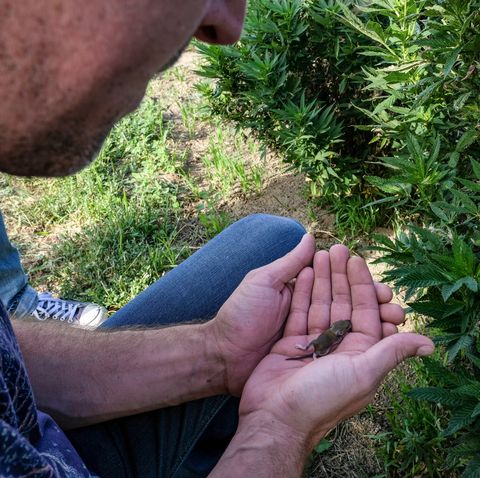
Stacey Leasca
That compassion is just what you’d expect from guys who produce whole hemp extracts containing Cannabidiol, or CBD, the buzzy cannabis-derived compound believed to gently help with pain, stress, and a host of other health conditions. Unlike its chemical friend Tetrahydrocannabinol, or THC — the other major compound found in cannabis — CBD doesn’t get you high.
On their idyllic farm in Wray, Colorado, a little blip on the radar near the Nebraska border, the Stanleys grow their proprietary hemp plant called Charlotte’s Web, a cannabis plant with extremely high CBD content. They use that CBD to make oils, capsules, creams, and balms — even CBD for dogs — and it’s all available online to be shipped anywhere in the country.

CHARLOTTE'S WEB
The company got the name “Charlotte’s Web” not from the children’s book, but rather from Charlotte Figi, a young girl with a rare, severe form of epilepsy called Dravet Syndrome. Charlotte used to suffer dozens of seizures a day, until her mom, Paige, approached the Stanley brothers about using their product — then known as “Hippie’s Disappointment” — to help manage her daughter’s symptoms. Charlotte started taking the CBD oil, and in her first week, went from having 300 seizures to none.
While you’ve probably heard the hype around CBD, you might be a little less sure of where, exactly, it comes from. For as far as the eye can see on the Stanleys’ farm, the hemp plants grow sturdy and strong in well-aligned rows. Sunflowers dot the borders, and a bright red farmhouse sits off in the distance. The air is Colorado fresh, and the ground smells of sweet earth. The plant itself is a shade of green that is best experienced in person, but can only be described as a mix of green and gold. Fitting, when you consider the CBD industry is poised to be a $2 billion business by 2022.
The Stanleys and their team of scientists walked MensHealth.com through the process of growing the Charlotte’s Web hemp plants, extracting the CBD, and selling their range of products.
Where does Charlotte’s Web CBD come from?

Stacey Leasca
CBD is one of more than 100 chemical compounds found in the cannabis plant, which includes both marijuana and hemp strains. While CBD can be extracted from marijuana plants, the Stanley brothers’ products come from “industrial” hemp, which contains less than 0.3 percent naturally-occurring THC. An estimated 50 percent of hemp plants in America are currently being grown for CBD extraction, according to the Associated Press.
One important note: The Stanleys’ CBD products are not the same as hemp oil. Hemp oil comes directly from hemp seeds, which contain negligible amounts of CBD. The Charlotte’s Web products come from the leaves and flowers of the hemp plant, which do carry the good stuff you’re looking for.
From Planting to CBD Extraction
Just as marijuana plants can be bred for their THC content, hemp plants can be specially bred for their CBD content. The exact composition of Charlotte’s Web is a closely-guarded secret, but the Stanleys says it’s grown with no unnatural pesticides, herbicides, or fungicides. Instead, they use natural predators like ladybugs — yes, they have what they call “an army of vicious ladybugs” — to protect their crop.
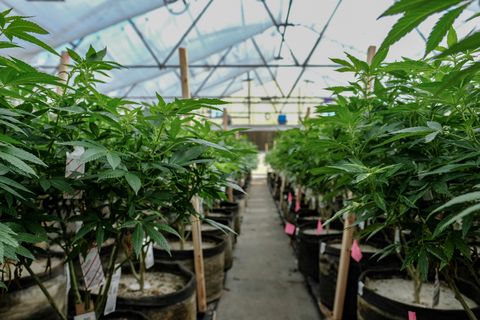
Stacey Leasca
The seedlings start out in a greenhouse. Depending on the season, some are transplanted to the 120-acre outdoor fields, while others continue their life cycle indoors. The Stanleys’ lead farmer, Ray Sitorious, oversees this whole process. He came to the farm with more than three decades of agricultural experience growing crops like corn, beans, and watching over cattle.
“What better job could you get than to get up every day and go to work and know you’re going to help thousands of people?” Sitorious, a brusque man in his mid-50s, said in his pickup truck as we drove down to the farm’s hemp fields. “Give them a higher quality of life. You know, that’s, that’s something that not very many people get to do.”
When the plants are grown, the farm team picks them and hangs them to dry in the barn. It takes about eight months for the plants to be primed for CBD extraction.
Extracting the CBD From the Charlotte’s Web Plants
Once the dried plants arrive from the farm, the real magic happens at the Charlotte’s Web lab. (This process mirrors what happens at other CBD production facilities, but certain elements are unique to this facility.)
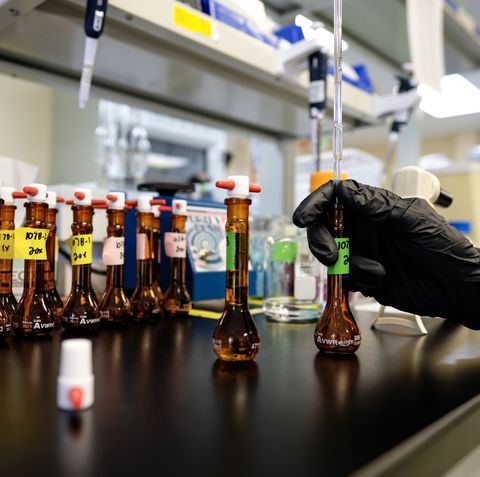
Stacey Leasca
Here’s a very simplified look at how the team extracts CBD from the plants.
Step 1
Before the plants even leave the farm, the team tests them to ensure there are no biological contaminants.
Step 2
The dried plants are shipped from the farm to the lab, where a machine pulls the leaves and flower from the stalks.
Step 3
Those leaves and flowers are placed in a special device, which uses carbon dioxide to extract the CBD and other useful chemicals. The device contains five chambers: two hold the plant material, and three collect the output of oil.
This process is known as CO2 extraction. It’s one of various methods of CBD extraction you’ll see across the cannabis industry, and one of two techniques used at Charlotte’s Web.
Step 4
Inside the device, the CO2 is chilled to the point of entering a “supercritical” state, which means it’s in between a liquid and a gas. That CO2 interacts with the plant material in such a way that it pushes the CBD out, leaving it to collect in the chambers at the bottom of the device.
Step 5
The final product is filtered several times to ensure any plant material is left out of the final product.
Step 6
The batches are sent through a number of different tests to make sure they contain no pesticides, heavy metals, residual solvents, or microbial contamination.
Step 7
It’s then sent to a clean room packaging area, bottled, and shipped to customers. Customers can check in on what’s in their bottle by looking up their batch number here.
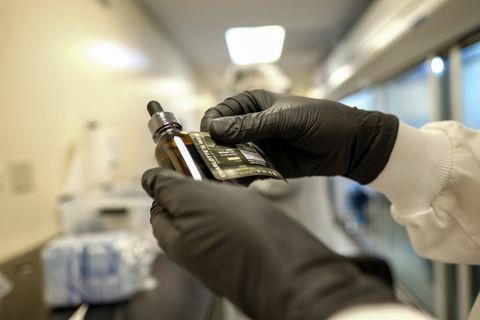
Stacey Leasca
“We’re under constant scrutiny so we have no choice but to produce the highest quality level product,” Vijay Bachus, Director of Production Operations at Charlotte’s Web, explained while sitting outside the company’s lab in Boulder. “We do it all by the book, because we can’t have any discrepancy in our process whatsoever. We have to do everything 100 percent correctly and holding ourselves to that level.”
That thorough production process is the mark of a superior CBD product, according to Joel Stanley. When you’re figuring out what to buy, “Look at the company and try to determine how much they care about the process from the beginning to end,” he said. Are they controlling the genetics and soil, and are they screening for quality? “When they control from seed to shelf, you’re gonna have a consistent product.”
What Happens When the CBD Gets To You?
Here’s where things get tricky. We don’t really know what happens when CBD hits your bloodstream. There’s not a lot of data out there about what CBD can do for you, and that’s because cannabis — which, remember, includes both marijuana and hemp — has been on the list of schedule 1 drugs for decades, making it difficult for scientists to get funding to study its effects.
What we do know is that in small-scale animal and human studies, CBD has been shown to reduce stress, anxiety, and inflammation in the body. It’s also anecdotally been shown to help stave off seizures in epileptic children, just as it did for Charlotte’s Web’s namesake. In June, the U.S. Food and Drug Administration approved an epilepsy medication containing a purified form of CBD oil — the agency’s first endorsement in history of a marijuana-derived drug.
Even the Stanley brothers themselves can’t actually say out loud what they think it can and can’t do for a person’s health. In fact, on the bottom of every bottle, you’ll still find the tiny little disclaimer stating the product has not been evaluated by the FDA, and that it’s “not intended to diagnose, treat, cure or prevent any disease.”
As far as proving CBD’s efficacy goes, we’re just at the beginning. As the sun went down over their vast hemp field, Josh — the eldest Stanley brother — said he’s confident that plenty more CBD research is on the horizon. After all, he pointed out, “human interest is on our side.”
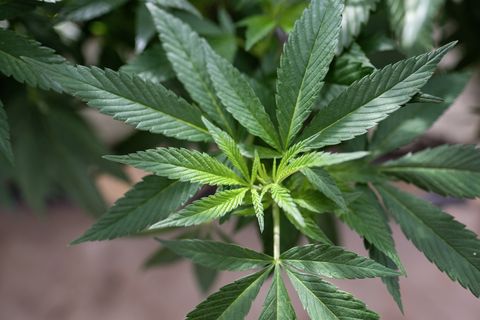
Stacey Leasca

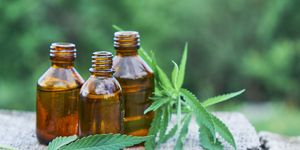
Source: Read Full Article